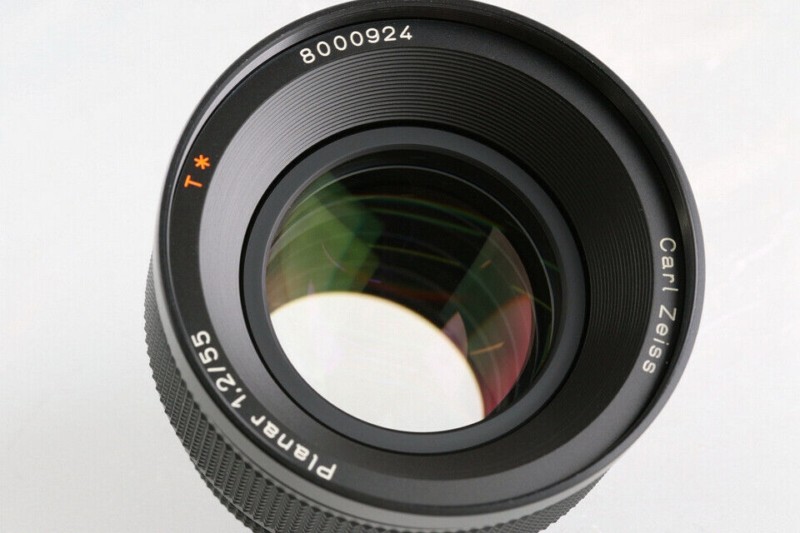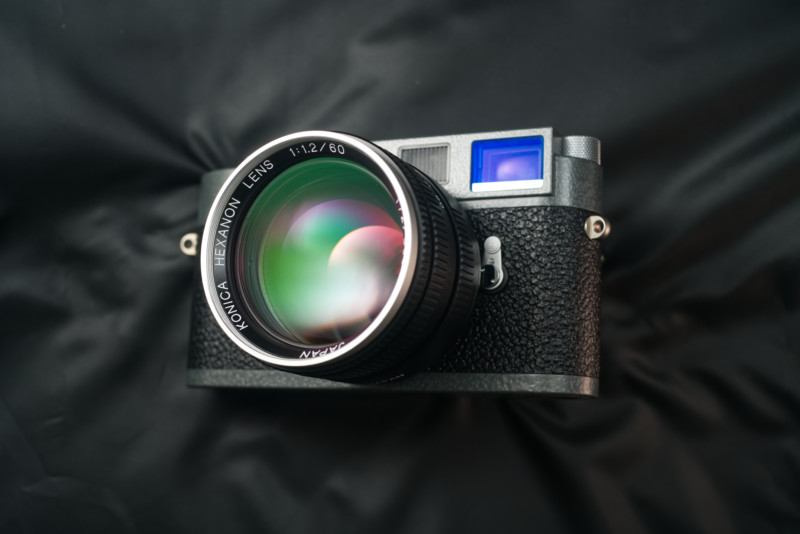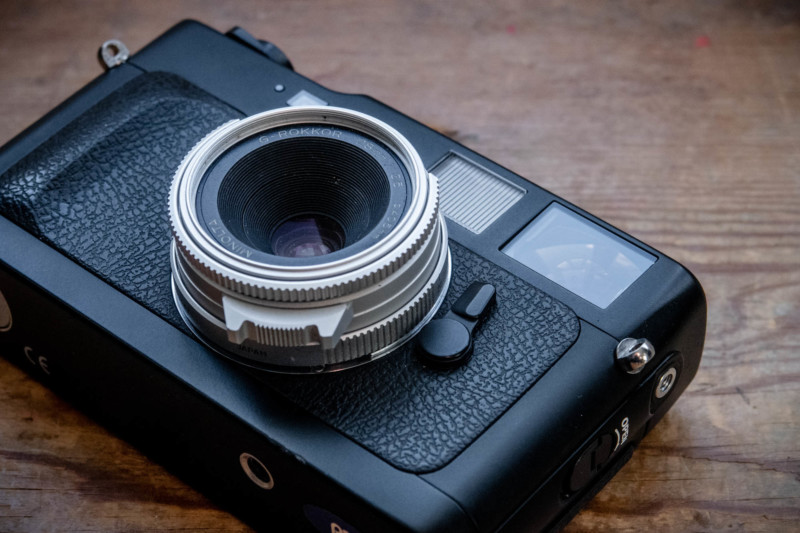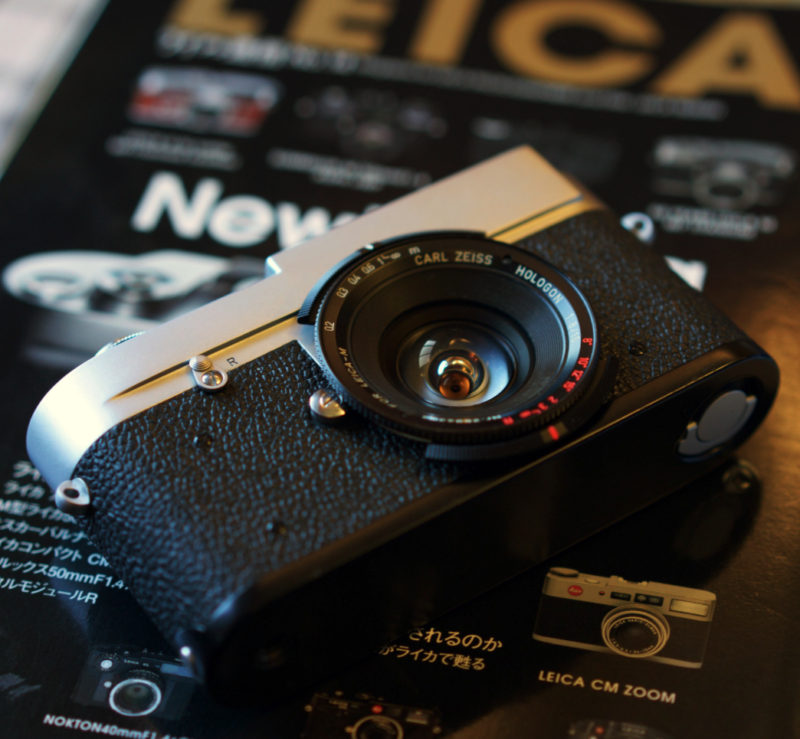![]()
Through the history of camera development, thousands and thousands of different types of lenses have been designed and produced. Some did not advance beyond the prototype stage, some were privately commissioned, and naturally many were mass-produced to one degree or another. Of these, some are particularly rare.
While many have been lost to time with little record of their existence, still others may appear buried in the chapters of obscure books and rarely see the first page of Google search results.
What we have tried to do here is compile a list of some of the rarest — and therefore most interesting — lenses ever made. “Rarest” is somehow both an opaque and very clear word — naturally, it would mean those lenses that were produced in the fewest numbers.
But a quick google search of “rarest lenses” will reveal article after article rehashing the same lenses over and over: the Zeiss 1700mm, Zeiss 50mm f/0.7, Nikon 6mm f/2.8 Fisheye, Leica 1600mm, and others. Basically, lenses you will probably never see in your lifetime.
To avoid repeating the same list ad nauseam, we have tried to find lenses that are actually available on the used market — lenses that you can actually purchase. Many of these lenses will only occasionally pop up on eBay or in other auctions. However, all of them are, by all definitions, extremely rare lenses.
Hopefully, with this approach, we can provide a list of some of history’s more interesting — and less written about — pieces of optical engineering. And subsequently, we hope that serves some educational value.
Contax Zeiss 55mm f/1.2 Planar T* MM 100 Jahre

In 1973, the Contax name was licensed by Carl Zeiss to Yashica in order to make a line of professional, high-quality 35mm SLRs and lenses. In 1983, Yashica was acquired by Kyocera, who continued to produce the cameras and lenses that Zeiss and Yashica had set in motion a decade prior.
Professional-grade cameras were sold under the Contax moniker while more budget-friendly options were stamped Yashica — both shared the same Contax/Yashica (C/Y) mount. The best of the C/Y lenses were designed by Zeiss and to this day are some of the finest vintage lenses you can purchase — very few film era lenses can hold a candle to today’s modern sensors, but a vast majority of Zeiss’s C/Y lenses are more than up to the task. In fact, the optical design of many of these lenses was directly ported over to the Zeiss Classic (ZF, ZF.2, ZE, ZK) line and subsequently to the Milvus line.
Some of these lenses, like the 50mm f/1.7 Planar, are rather affordable while others, like the 85mm f/1.4 Planar or 28mm f/2 Distagon (also known as the “Hollywood” for its desirability among filmmakers), will run into the four figures. Most exist somewhere in the middle. Others, like the 85mm f/1.2 Planar or 200mm f/2 Aposonnar, are quite rare and can cost as much as a car when they occasionally show up on the open market.
The 200mm f/2 Aposonnar could be on this list just as easily, but I picked the 55mm f/1.2 Planar due to how popular very fast 50mm-ish lenses are.
Personally speaking: Especially because of my deep love for Contax Zeiss lenses, this is a dream lens of mine. It is unclear exactly how many were produced, but they were all done so to commemorate the 100th Anniversary of the Zeiss Planar patent, which is where the “100 Jahre” (German for “100 Years”) fits in.
Suffice to say, the lens will run you a pretty penny — somewhere between a Nikon Noct-Nikkor 58/1.2 and a brand new Leica Noctilux, depending on condition. But you can buy them, so these lenses are not just a pipe dream.
Konica Hexanon 60mm f/1.2

Unlike many Konica Hexanon lenses — most of which were produced for Konica’s AR mount — this one is rather new and was released in March of 1999 for the Leica Screw Mount (aka Leica Thread Mount or “LTM”).
In 1996, Konica commissioned a run of lenses in both the Leica M mount and Leica Thread Mount. The latter was unusual for the time since most rangefinders of the era had long since moved over to the Leica M-mount. One of these LTM lenses was the 35mm f/2L Hexanon, a clone of the highly regarded lens on its Hexar AF compact camera. While this lens is also highly sought-after, none are more so than the Hexanon 60mm f/1.2, which was produced in a limited run of just 800 units.
The lens is rangefinder coupled and can work on modern M-mount bodies (film or digital) via the use of a simple adapter — though you will have to make some approximations with the frame lines to support the 60mm focal length.
Konica M-Hexanon Dual 21-35mm f/3.4-4

Konica’s entry into the M-mount arena was not done on a whim. In fact, Konica and Leica entered something of a rivalry in the 1990s, with some rumors claiming Konica began making rangefinder lenses out of spite and in an attempt to one-up Leica in image quality while simultaneously undercutting the price — which it did, on both counts, several times.
Throughout the 90s, Konica released a ton of M mount lenses, many of which are easily found on the used market.
In 2000, Leica introduced the revolutionary 28-35-50mm f/4 Tri-Elmar for its M-line of bodies. This was the first time rangefinder users had the ability to change focal lengths without swapping lenses. Not more than two years later in 2002, Konica hit back with its 21-35/3.4-4. The “21-35” should not be read as most of us are used to, but rather in the same way as the 28-35-50 Tri-Elmar — it is not a zoom lens, but rather a lens that offers both 21mm and 35mm, just as the Tri-Elmar offers 28, 35, and 50mm.
The Konica, while it offers one less focal length, actually surpassed the Tri-Elmar in a number of regards. Obviously, at 21mm it is much wider than the Tri-Elmar’s 28mm. But its design was also improved — by implementing a variable aperture (f/3.4 at 21mm and f/4 at 35mm), Konica eliminated the need for multiple cams that were necessary for Tri-Elmar to keep its constant f/4 aperture. The zoom and focus were also internal, which made operating the lens significantly smoother.
Best yet, the lens is repudiated to be a stellar performer with a pedigree up there alongside the Leica. An estimated 800 were produced, so it is possible to find them on the used market with some patience.
Leica Elcan 66mm f/2
![]()
A lot of Leica lenses are highly regarded and incredibly desirable. Many of them — like the Noctilux — could even be ascribed legendary status. But the Leica Elcan 66mm f/2 exists as both a legendary optic as well as one that is not often discussed.
In the early 50s, Elcan (Ernst Leitz Canada) was chartered in Midland, Ontario to serve the North American market. Fortunately for us, it was also tasked with developing its own lenses under the esteemed Dr. Walter Mandler, who was originally on loan to Elcan for a brief period. But Mandler ended up staying in Canada for over fifty years, eventually becoming a citizen.
Mandler is one of history’s most lauded optical engineers. Known for pushing boundaries and implementing the seemingly impossible, Mandler became responsible for countless classic Leica lenses: 35/2.8 Summaron, 35/2 Summicron, 35/1.4 Summilux, 50/1.4 Summilux, 50/2 Summicron, 50/1.0 Noctilux, 75/1.4 Summilux, 21/2.8 Elmarit, 180/3.4 APO-Telyt, all of the Leica R lenses, and dozens of others.
Part of Leitz Canada’s business focused on the development and production of military cameras and lenses — such lenses received the “Elcan” designation. A lot of these lenses were used by NATO during the Cold War, supposedly as “spy” lenses, and were not available to the public. One such lens was the Elcan 66mm f/2, purportedly produced for the U.S. Navy with an aim toward ultimate resolution.
It seems Leitz Canada was successful in that regard, as the Elcan 66mm is said to be an incredible performer, even on today’s modern digital cameras. Unfortunately, about 200 copies were ever made, so they only become available on the market every so often and they fetch a high price to match.
Leica Elcan 90mm f/1.0
![]()
Elcan produced several lenses for the military, including a 50mm f/2 and the aforementioned 66mm, but perhaps none of them are as likely to induce your “gear acquisition syndrome” as this one. With this lens, Mandler forever cemented his legacy as a fearless optical engineer. As far as I know, this is the fastest lens above 60mm ever produced, excluding X-Ray and other non-photographic lenses.
Made for the United States Air Force for specialized night photography, the Elcan 90mm is a hulking beast of a lens. With a wider front diameter than the Leica 560mm Telyt, it is a lens to which you mount a camera, not the other way around.
Don’t get too excited about shooting ultra-shallow depth of field portraits with it, though. Because of its massive size, which blocked the entire viewfinder, the lens does not have a standard focus ring. Since it was designed for nighttime aerial photography, the lens instead has three focus rings to swap between: one for infinity, one for 100 meters, and one for 50 meters.
With an estimation of only ten copies ever produced, it is unlikely — though certainly possible — that you will ever see one up for sale. But there is a chance!
Minolta G-Rokkor 28mm f/3.5

In the mid-90s, Minolta released its entry into the luxury-compact craze. The Minolta TC-1 is one of my favorite compact 35mm cameras — and one of the most expensive — due primarily to its petite design and its outstanding G-Rokkor 28mm f/3.5 lens. Many of the luxury “point and shoots” of that era were known for their excellent optics and the Minolta TC-1’s sits right near the top.
Several manufacturers released rangefinder versions of compact camera lenses. The Ricoh GR’s 28/2.8 lens and the GR21’s 21/3.5 lens were both released in Leica Thread Mount and the Konica Hexar AF’s 35mm f/2 lens was released in M-mount. As a part of the 70-year celebration, Minolta released the G-Rokkor 28mm lens from the TC-1 lens in Leica Thread Mount in a limited edition run of just 2,000 units. This makes it a bit more common than some of the others on here — and likewise the most affordable.
I was loaned one a few years back to try, which I did on both film and digital, and the results surpassed my expectations substantially. It makes for an incredibly compact kit when mounted on an M-mount Leica CL or Minolta CLE and is a true pleasure to use. You must be aware of some potential corner and edge smearing and/or color cast on some mirrorless cameras — it works better on, for example, a Nikon Z than a Sony due to the former’s thinner sensor stack. Results on a digital Leica M body are certainly even better.
Nikon Nikkor 13mm f/5.6
![]()
The Nikkor 13mm f/5.6 is considered one of the “Holy Grails” of Nikon lenses, and vintage lenses in general. I have to admit, due to my deep love of vintage cameras and lenses, that this is one of my top ten most desired pieces of glass. Thousands of vintage lenses have passed through my hands, but never this one. The closest I have gotten is owning the also very rare Nikkor 8mm f/2.8 AI-S, but that is a circular fisheye.
The Nikkor 13mm, produced from 1976 to 1998, is a rectilinear super-wide-angle and its claim to fame was its extraordinarily low distortion. In fact, it was the widest non-fisheye lens on the market for an incredibly long time. Most other lenses of the era from 16mm and below were fisheye lenses (and often quite poor performers). Bear in mind, this lens has a back-focus of about 3.5 times its focal length — an extraordinarily difficult feat to overcome, even today. It is incredibly difficult to produce extreme retrofocus lenses and in 1976 it was unheard of. The Nikkor 13mm, on the other hand, was a different story.
With a huge, bulbous front element that measures 115mm in diameter, the lens features a 118-degree field of view and an extreme retrofocus design with 16 elements in 12 groups. A Triplet and a Tessar type are positioned behind the aperture, while the elements in the front could best be understood as a sort of wide-angle converter. A specialized floating design helps to minimize optical aberrations at near-focus distances.
Even today, the lens remains a remarkable performer. No, it is not perfect, but very few full-frame 13mm (or thereabouts) lenses are — especially SLR lenses. Even wide-open, sharpness is excellent across 95% of the frame, with only the extreme peripheries showing signs of distortion and axial chromatic aberration. Stopping down to f/8, vignetting improves considering, while axial and lateral CA are almost non-existent. By f/11, its resolution is extremely uniform across the entire frame — though if used on high-pixel density sensors, diffraction may mitigate some of this bump in quality.
Image quality nitpicking aside, this lens represents one of the most remarkable technological achievements in photographic history. There are few SLR lenses that exhibit this level of performance, even including modern designs. It’s a landmark lens and one that I hope all who are interested get to try at least once.
Nippon Kogaku Nikkor-N 50mm (5cm) f/1.1
![]()
Well before Nikon was among the industry leaders of 35mm SLR production, it was producing and distributing rangefinder cameras and lenses — “Nippon Kogaku” was commonly found on the rim of its lenses from this time since that was Nikon’s original name and actually remained so until 1988. The familiar “Nikkor” designation — which exists in use to this day — was originally intended to be “Nikkon” but the company faced complaints from Carl Zeiss who produced the popular Zeiss “Ikon” brand.
In the late 1940s, Nikon unveiled its rangefinder line of cameras, starting with the Nikon I and followed by the Nikon M, S, S2, and fully maturing with the SP in 1957. The design of these cameras is almost a hybrid between Leica’s M3 and the Contax IIa. The Nikons used Contax’s unusual bayonet mount, which contained a focusing helicoid in the mount itself and therefore meant that many of the lenses had no focusing mechanism. The SP retained the overall aesthetic of the Contax bodies but employed a film advance lever (instead of a knob) and two viewfinders (unheard of before or since) both with multiple frame lines. It also had a titanium shutter (the first-ever in any camera) and unlike either Zeiss or Leica, it sported the hinged door design that would eventually become the standard across almost all cameras.
With its rangefinder line, Nikon also pushed the boundaries of optical design — most notably a gigantic 1000mm f/6.3, and of course the 50mm f/1.1 discussed here. The 50mm f/1.1 became the fastest commercial lens ever released when Nikon unveiled it. Naturally, it was enormous.
In fact, there are two different versions (three, when you count the few that were made in Leica Thread Mount). The first version uses the same focus system as other lenses in the line, meaning the focus is achieved by the rotation of the camera’s bayonet mount instead of a helicoid in the lens. The issue? The lens was so large and heavy, it was not uncommon for it to break the camera’s mount.
Nikon solved the problem by releasing a version with its own built-in helicoid and an “external mount” — basically, it was a kind of support fitted around the body’s mount to take the strain of the lens’s weight. Focusing was no longer controlled via the camera’s index finger-operated wheel, but simply like a regular lens.
It was also released in Leica’s thread mount, though such versions are much rarer than the already rare Nikon S mount variants. Strangely, the S-mount lenses are more desirable by collectors, so if you do find an LTM version, it likely won’t cost much more.
Zeiss Hologon 15mm f/8

This lens is a bit of a legend around Zeiss circles. It was originally produced as a mate for the Zeiss Ikon Contarex Hologon Ultrawide, which was essentially an SLR body based on the earlier Zeiss Ikon Contarex models. Due to the lens’s excessively protruded rear element, the mirror had to be removed from the camera and an optical viewfinder was molded into the top plate above the lens. Obviously, zone focusing was necessary, but with a maximum aperture of f/8 and a 15mm focal length, that was not much of an issue. In fact, the hyperfocal distance is around three feet, so it is pretty much a set-it-and-forget-it situation.
Zeiss Ikon folded in the 1970s at which point Carl Zeiss allowed Leica to convert the remaining stock to Leica M mount — this made it the first and only Zeiss M mount lens until Zeiss began producing its own M-mount lenses in the mid-2000s. Zeiss went on to remake the lens for the Contax G system in the 1990s, albeit with a 16mm focal length and more complex optical design.
Roughly 1,400 15mm Hologon lenses were produced, but only 225 were converted to Leica’s M mount.
The Hologon is an incredibly unobtrusive and thin lens, basically the size of a Leica body cap — at least when mounted on a camera where the lengthy rear element can disappear into the body. With a very simple three elements in three groups triplet design, a 110-degree field of view, and tiny size, you may not expect much out of this thing — but Zeiss rarely disappoints. While it certainly doesn’t live up to the standards of modern lenses in this focal range, it is still a remarkably good lens — especially for its time, when it was hailed as a masterpiece of optical achievement.
If you want a taste of this lens without shelling out the cash, you can find the Contax G 16mm Hologons converted to M mount quite regularly. They are not identical, but they’re cousins, and the 16mm has the benefit of being optically superior as well as significantly cheaper.
Image credits: Background of header photo licensed via Depositphotos.
Author: Matt Williams
Source: Petapixel



